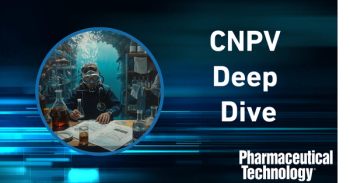
- Pharmaceutical Technology-07-02-2005
- Volume 29
- Issue 7
July 2005
Able Laboratories, Inc. (Cranbury, NJ, www.ablelabs.com) announced in late May that it would halt all production and recall all available product because of problematic testing procedures discovered during an internal investigation. The company manufactures mostly generic prescription drugs, including drugs containing acetaminophen.
RECALLS
Recalls, Resignations, and Manufacturing Suspensions Plague Able Labs
Able Laboratories, Inc. (Cranbury, NJ,
Chairman and Chief Executive Dhananjay G. Wadekar announced his resignation shortly after the review, as company shares fell nearly 75%. Robert G. Mauro, Able's president and chief operating officer, assumed the role of interim CEO.
According to a release from Able, the company also intends to withdraw seven of its approved abbreviated new drug applications (ANDAs). The company cited various reasons for the withdrawal, including commercial considerations and the identification of unreliable data included in the filings.
On May 27, the US Food and Drug Administration (Rockville, MD,
The company said on May 27 that it had laid off approximately 200 manufacturing and other employees. On June 9, Able announced plans to reduce its workforce even further to conserve assets.
—George Koroneos
PACKAGING
RFID Pedigree Program Enters Pilot Phase
In an effort to exert tighter control over the flow of drugs through the supply chain, Purdue Pharma (Stamford, CT,
The pilot incorporates a SupplyScape (Cambridge, MA,
"Pharmaceutical companies are looking to institute standards that safeguard consumers from the growing threat of counterfeit drugs," said Todd Skrinar, partner, Healthcare and Life Sciences, Unisys in a company statement. "The implementation of an electronic pedigree system can help Purdue increase consumer safety."
This pilot is another phase of Purdue's anticounterfeiting and diversion plan launched in November 2004. The company has already shipped products incorporating RFID tags on individual labels to Wal-Mart and H.D. Smith and expects the new test to help lead to national adoption of pedigree systems for all drugs. The state of Florida has taken a lead in this effort by enacting rules requiring electronic drug pedigrees before July 2006.
—George Koroneos
WARNING LETTERS
C&M Oxyfill
On May 26, the US Food and Drug Administration (New Orleans, LA,
The cited CGMP violations included:
- failure to establish certain laboratory controls;
- failure to routinely calibrate, inspect, or check automatic, mechanical, or electronic equipment;
- failure to ensure that all production and control records were reviewed and approved by the quality control unit to determine compliance;
The letter warned that the compressed oxygen cylinders manufactured by C&M are misbranded because the product's labels do not have the required statement "Rx Only" prominently placed so it would be likely to be read and understood by an individual during purchase and use.
REGULATORY
New Excipient Guidance Doesn't Fill Regulatory Gap
The US Food and Drug Administration (Rockville, MD,
The Guidance for Industry: Nonclinical Studies for the Safety Evaluation of Pharmaceutical Excipients outlines the safety tests that should be performed on new excipients. According to Jay Goldring, PhD, a member of the Executive Board and the Regulatory Affairs Committee at the International Pharmaceutical Excipients Council (IPEC Americas, Arlington, VA,
Currently, there is no system for independently evaluating the safety of excipients, which are only evaluated by FDA in the context of a new drug application (NDA). "It's a catch-22," Goldring says. "No drug company wants to use a new excipient until it's been approved, but no drug company wants to submit a new excipient for approval within their drug application because it could jeopardize the approval of their entire application. So there's a regulatory hole here."
IPEC Americas has submitted a proposal to FDA to narrow that regulatory gap by forming an independent academic board to review safety data about new excipients. According to the proposal, FDA would take the board's conclusion into consideration when evaluating a new drug product that includes the excipient. "It would be a kind of preliminary approval," says Goldring. "FDA still would have final say, but it would allow the excipient manufacturer to go to drug companies and say, 'The panel has approved it, and about 90% of the time FDA takes the recommendations of the panel,' or something like that." Excipient safety still would have to be evaluated in each individual drug product, Goldring says, because excipients can interact differently with various active ingredients.
Goldring says the board could also help excipient companies determine exactly which safety tests are necessary for a given excipient, particularly when an older excipient has been modified. "For example, if you have an old excipient and just add a hydroxyl group or a new polymer, is there some abbreviated type of testing you could do? That is something that an independent evaluation panel also could determine," says Goldring.
IPEC hopes to have a formal meeting soon with FDA to discuss its proposal. The guidance lays the groundwork for the discussion, Goldring says, because it establishes the kind of testing needed to ensure excipient safety. "This is a stepwise process," he says. "The first step is done. Now we're moving on to the next step."
—Laura Bush
MANUFACTURING
Eli Lilly Scales Back Planned Virginia Insulin Plant
Eli Lilly and Co. (Indianapolis, IN,
In a meeting with the Board of County Supervisors, the Post reported, company officials said they now intend to hire only half the approximately 700 workers originally planned and will reduce the planned 600,000-ft2 complex to 300,000 ft2. Construction is now expected to begin this winter, and the plant should be fully operational before 2009.
The news report cited increasing costs of steel and other building materials as a major reason for the cutback and the delay in the construction start. Industry analysts linked the decision to erosion in Lilly's insulin market share and declining sales of one of the company's insulin products, "Humulin."
—Laura Bush
REGULATORY
Compounding Pharmacies' Lawsuit Against FDA Will Continue
The US District Court for the Western District of Texas (Midland, TX) has ruled that a lawsuit against the US Food and Drug Administration (Rockville, MD,
A coalition of 10 compounding pharmacies sued FDA for engaging in "unlawful" inspections of state-regulated pharmacies. At the center of the lawsuit is a 2003 FDA compliance policy guideline (CPG 7125.40), which prohibits the compounding of drugs from bulk ingredients. The agency has since inspected several compounding pharmacies to enforce the guidelines.
The pharmacies petitioned the court to allow them to continue using compounding methods without FDA considering them manufacturers or requiring them to meet the agency's manufacturing guidelines. The coalition alleges that federal law prohibits FDA from inspecting state- regulated pharmacies and that the agency is exercising jurisdiction without the authority to do so.
—Kaylynn Chiarello
DRUG DELIVERY
Self-Assembly Nanotechnology Improves Microencapsulation
A group of chemical engineers from Rice University (Houston, TX,
Though microencapsulation is a promising technique for drug delivery, traditional production methods require multiple steps that could affect the drug molecule. With sacrificial core templating, for example, microcapsules are made by layering a coating onto a template or a core. The core must be dissolved or burned out to form a hollow center, which could damage the drug or its carrier. In addition, techniques using flow methods only produce large capsules and have limited applications.
The Rice technique involves self-assembly, which means that hollow spheres form spontaneously when certain polymer and salt components are combined. "If you know how to mix things, you can make microcapsules," says Michael S. Wong, assistant professor of Chemical Engineering at Rice. "That's the novelty of what we've been able to do. It's easy and has a lot of potential applications."
Researchers mix together three common off-the-shelf ingredients: a water-soluble, cationic polymer such as polylisine or polyallylamine, citric acid, and silica nanoparticles. The mixing process occurs in water at room temperature, under normal pressure, and at mild, near-neutral pHs. Upon mixing, 1-4-μm particles form in less than a minute. According to Wong, the structures hold up under their own weight and will not puncture or collapse like deflated balloons. In addition, the research team believes the technique will be suitable for large-scale production.
Because the process occurs in water, any chemical or drug that's suspended in the water gets trapped inside the hollow sphere when it forms. To encapsulate a drug particle, for example, the team adds the "cargo" to the solution and then mixes in the other components. A hollow sphere naturally forms around the droplet of water that contains one drug molecule. Says Wong, "It's green chemistry. You don't have to waste solvents, and it happens very easily, quickly, and nondestructively."1
One application of interest could be timed and controlled drug release in the body. The research team is currently exploring how to use factors such as pH level or temperature to prompt the microcapsules to open and release drug. The team has already experimented with magnetic microcapsules (using iron oxide nanoparticles rather than silica) that enable physicians to control exactly where the drug will be released using magnets.
The group also is exploring how various molecules affect the self-assembly chemistry and how to make the spheres monodispersive. "We're now trying to make the chemistry such that the spheres will all be the same size. And we're on the right track," says Wong.
—Kaylynn Chiarello
1An in-depth discussion of the methodology is presented elsewhere (Adv. Mater.17, 1145-1150 [2005]).
FORMULATION
It Helps to be Flexible: Supple WIN Compounds Could Cure the Common Cold
A wiggling WIN antiviral compound (which received its name from the former Sterling-Winthrop company) could be the answer for fighting the common cold, says a team of Purdue University (West Lafayette, IN,
The rhinovirus—one cause for the common cold—has two main properties that make it difficult to stop. First, the virus can go incognito by subtly changing its surface structure and making it undetectable by the body's immune system. Second, after the virus enters the cell, it opens up a trap door to unleash RNA that instructs the cell to produce more rhinovirus particles.
A small, cigar-shaped cavity located in the folds of the VP-1 protein on the viral shell helps guide these changes. Filling this crevice prevents the virus from shape shifting and is the key to curing the cold, say the Purdue researchers. "What we'd like to do is find something that will stabilize these VP-1 proteins so the trap door can't open, and WIN compounds are potential compounds for the job," said Carol B. Post, professor at Purdue, in a press release.
By using computer simulations of the molecule's structure, the team has discovered that the WIN compound's flexible nature allows it to wiggle into this gap. Once inside the cavity, the molecule affects the VP-1 protein's rigidity, thereby deactivating the virus. Said Post, "In essence, the compounds can get tangled up in the protein so it can't move enough to let the RNA out. One reason WIN compounds are promising is that they are very good at getting to the spot where they can tangle up the protein effectively, which turns out to be a tricky business."
Researchers speculate the stiffness may also inhibit the virus from opening its trap door because, just as people don't like exercising after a big meal, "having a WIN compound in its cavity may be the VP-1 protein's equivalent of having an overly full stomach," noted Post.
—Kaylynn Chiarello
Articles in this issue
over 20 years ago
Police Linesover 20 years ago
Let's Collaborate on IT Best Practicesover 20 years ago
Current Thoughts on Critical Process Parameters and API Synthesisover 20 years ago
Singapore Flingover 20 years ago
In the Spotlight: Pharmaceutical Science & Technology Innovationsover 20 years ago
FDA, Congress Push for Safer Drugsover 20 years ago
Bioseparations Look Ahead to the Pastover 20 years ago
US Pharmacopeia's International ActivitiesNewsletter
Get the essential updates shaping the future of pharma manufacturing and compliance—subscribe today to Pharmaceutical Technology and never miss a breakthrough.




